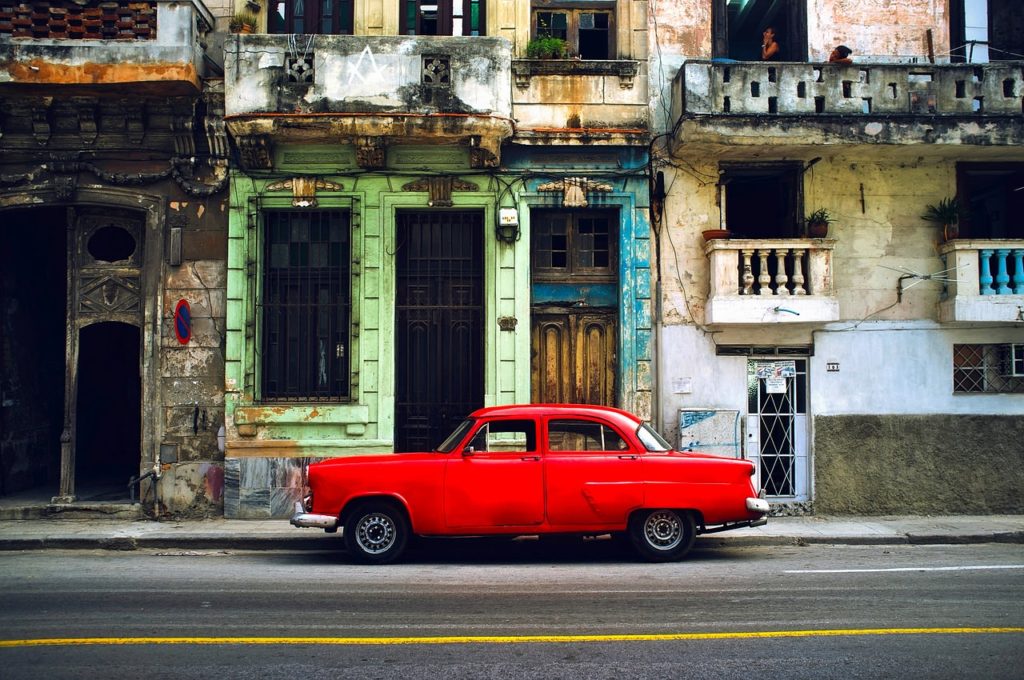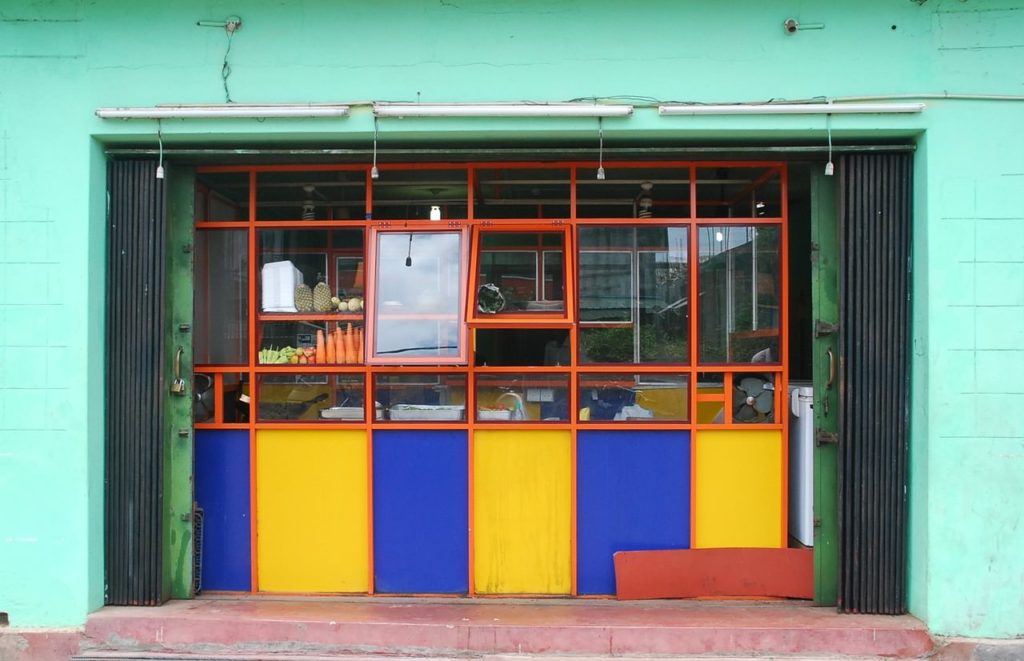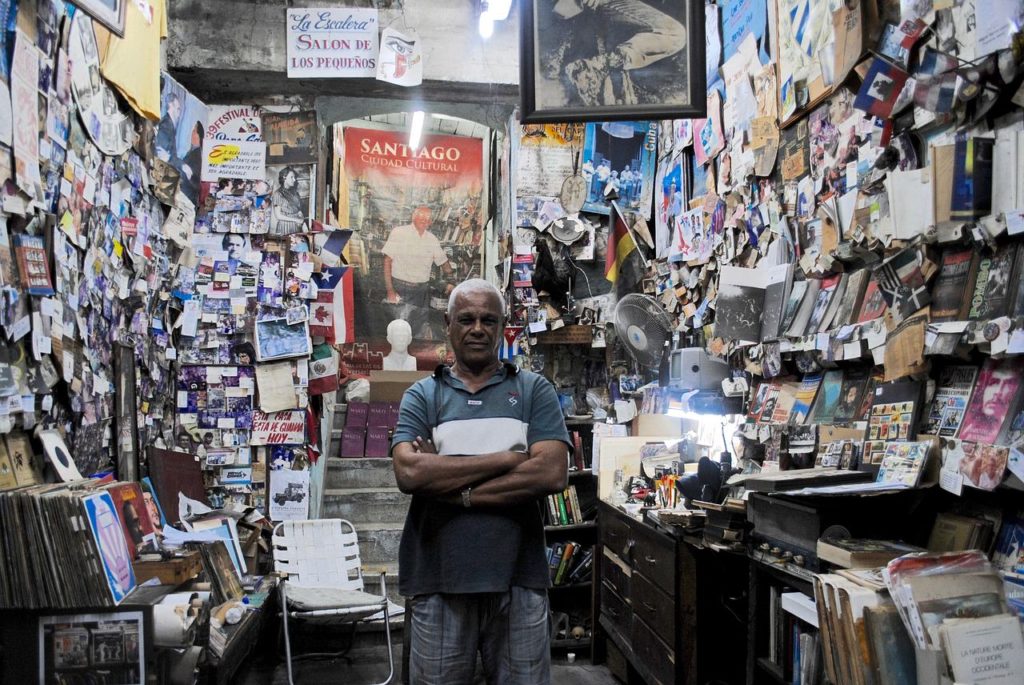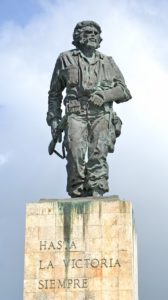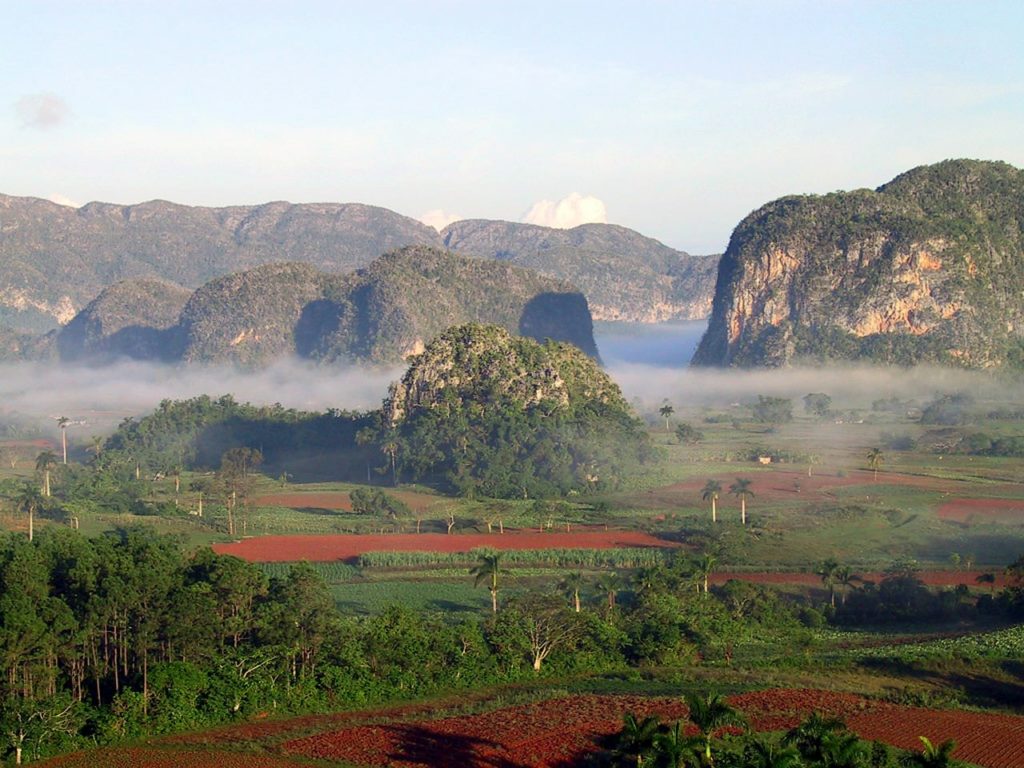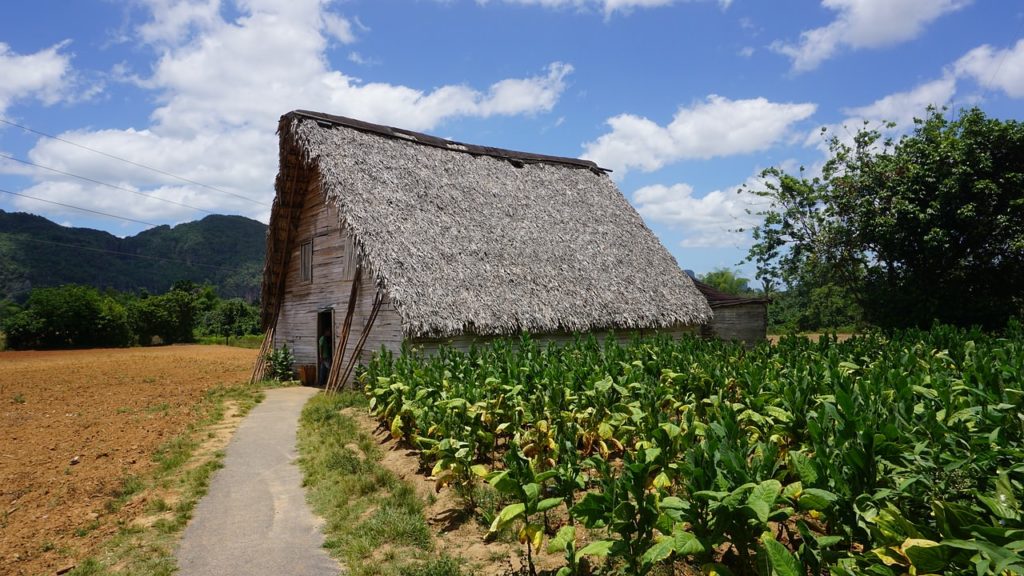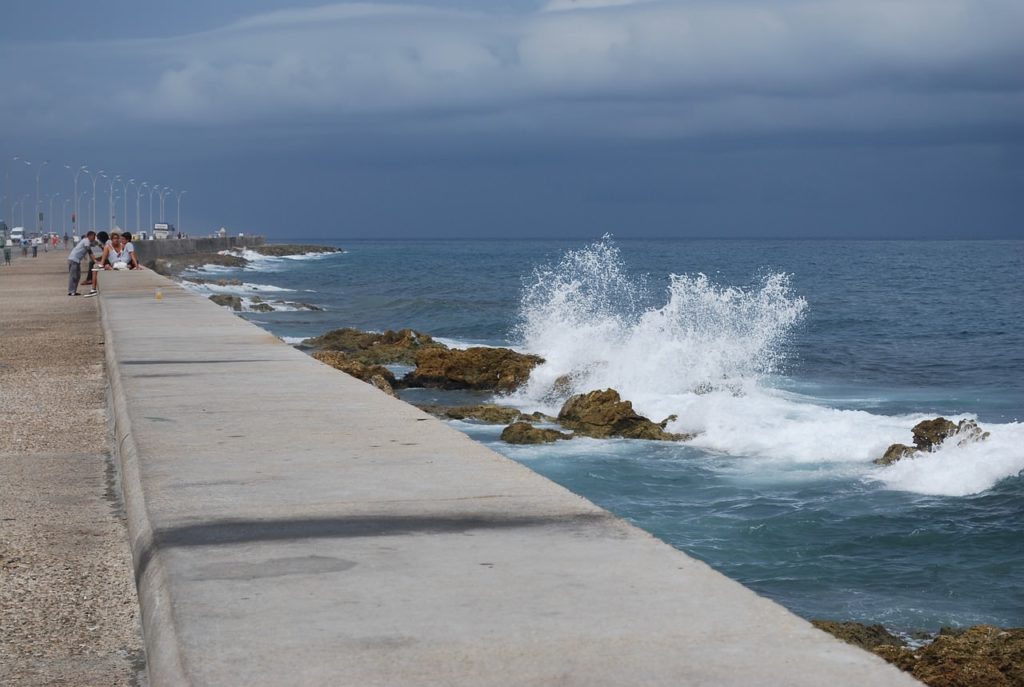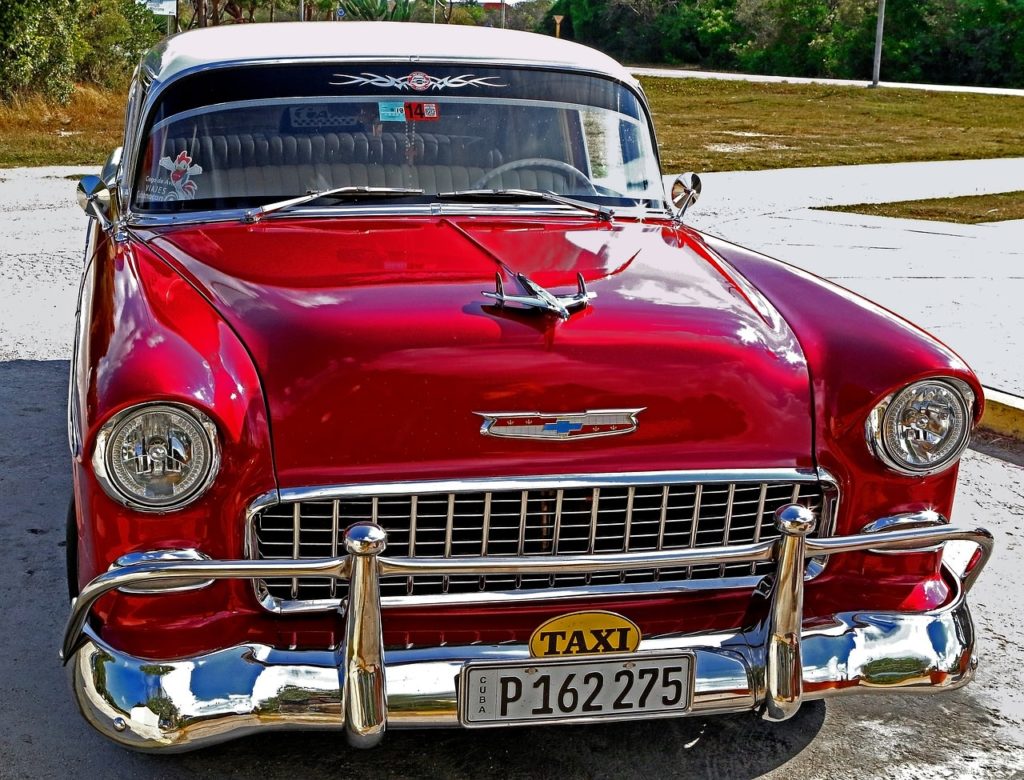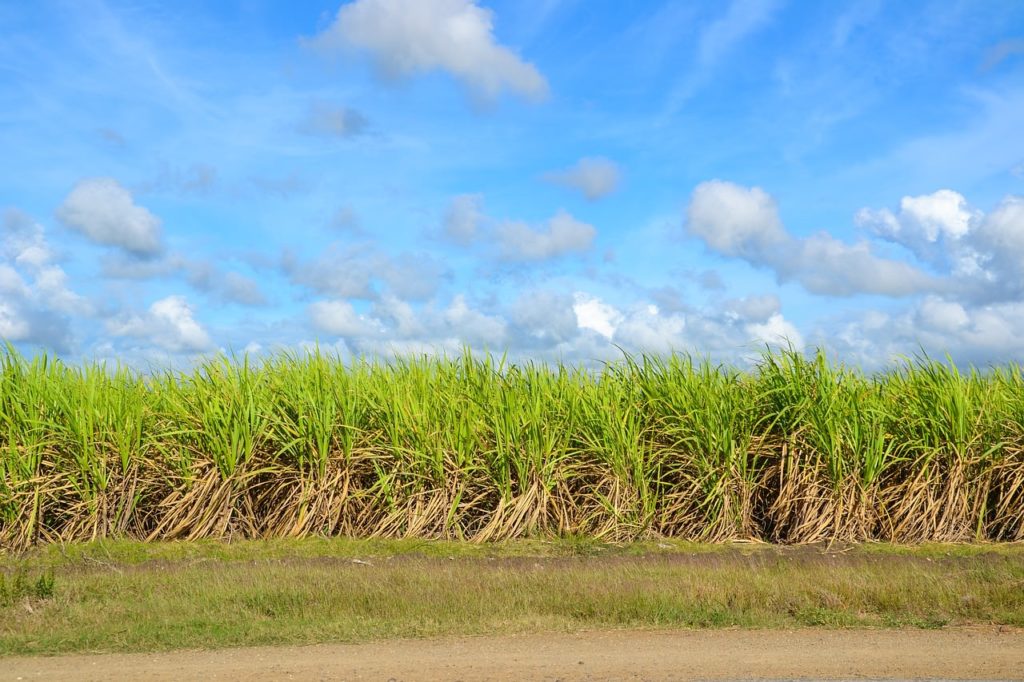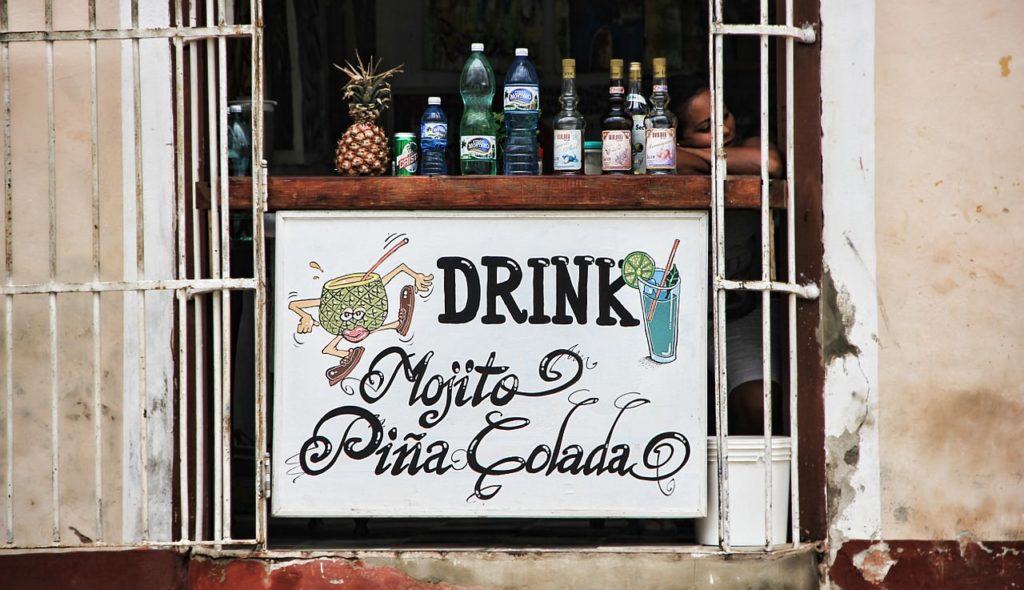Backpacking in Cuba
Backpacking in Cuba is a very special experience – the Caribbean island offers a unique variety of culture and nature on approximately 110,000 square kilometres. The island’s eventful history has undoubtedly contributed to its cultural diversity. Since the Cuban Revolution, the communist country has been largely isolated from the world. Thus, the original charm that attracts visitors to the island has been preserved to this day. Old American road cruisers and streets with Spanish, neoclassical colonial buildings characterise the picture. Their special charm lies precisely in the fact that most of them have not been restored.
Behind this morbid charm, of course, is the fact that there is simply no money available for the renovation of buildings. And the American road cruisers cross there less out of nostalgia than in the absence of newer vehicles.
In recent years there have been signs of change, which is certainly connected with Fidel Castro’s death. Fidel Castro ruled Cuba from 1961 to 2008, and a gradual opening of the country has begun since then. The most striking sign of this change was probably Barack Obama’s visit to Cuba in 2014. Obama was the first US president in 88 years to step on Cuban soil and thus resume initial diplomatic contacts.
The Cuban population is very poor. According to Cubaheute.com, the average wage of a state employee is 471 pesos (about 18€). This poverty shapes – of course – the life, and also the interaction with foreign visitors.
Foreigners are often considered to be rich. That’s why you’ll often meet people who don’t understand why you want to eat in Cuban restaurants or buy at Cuban markets instead of living in luxury hostels and dining in the more expensive restaurants.
How Cubans react to this is very different. Especially the hosts in the casas particulares, who also regularly rent rooms to foreigners, are usually very open and cordial. But you will also meet people again and again, who are suspicious of you at first.
It is also important to know that there are two currencies in Cuba, the CUC (Peso convertible) and the CUP (Peso cubano). Sometimes it is said that the CUC is for foreigners. But that is not true. Even locals pay certain things in this currency, and foreigners are also allowed to use the Cuban peso. It is advisable to have both currencies with you, as both are not accepted everywhere.
In many restaurants there is also a kind of “segregation”. Those who pay with CUC have to sit in one (often less beautiful) corner, those who pay with pesos in another. Foreigners are automatically directed to the CUC corner – the prices are much higher there.
If you want to attract less attention, you can use Cuban pesos in cafés and restaurants for locals. It can also be helpful to travel with Cubans. So you are less noticeable as a “foreign body”.
It is also recommended to bring enough money with you to Cuba. Many cards do not work at the ATMs. Credit cards of German credit institutes are accepted mostly, it becomes however 10% fee due for the disbursement.
Culture in Cuba
Cuba has a good 11 million inhabitants. On the island, history has left cultural traces of various origins – this is also reflected in the ethnic composition of the population.
Ethnic groups in Cuba
51% of the population are mestizos, people of mixed ethnic origin. 37% are Caucasians, who are mainly descendants of the Spanish colonialists. The African Cubans, descendants of the African slaves, make up almost 10% of the population. 0.1% are of Asian origin, predominantly Chinese. The indigenous population (“Indian peoples” such as the Taíno) are extinct.
However, the ethnic composition is very different in the different regions. oriente (Eastern Cuba) is the centre of Afro-Cuban culture and therefore has its own culture and special atmosphere.
Religion in Cuba
Cuba is strongly influenced by Catholicism. However, the Santería also plays a very special role. This is a syncretistic religion in which cults of African origin are specifically linked to Catholicism.
If you are interested in religious cults and practices, you should ask locals if they know someone who is a Santería follower. Maybe they can take you to a Santería meeting. This is definitely a unique experience!
Cuban Revolution and History of Cuba
The capital, Havana, is the largest city in Cuba with a population of around 2.2 million. The historical heart of the city has been almost completely renovated, as the city receives subsidies as part of the UNESCO World Heritage Site.
Here in the capital you will also find many of the country’s most important museums. Especially the cultural-historical museums reveal a lot about the country – and above all about how it sees itself. This view from the inside often deviates dramatically from the “outside”. So if you want to learn something about the country, take a look at one or the other museum!
If you want to understand why not all Cubans are enthusiastic about the “new opening” of the country, you should take a look at the history of the island. Since its discovery by Christopher Columbus in 1492, it has been subject to foreign rule throughout.
In this respect, the Cuban revolution, which is usually viewed negatively by foreigners, was indeed a liberation from the burden of foreign rule. Therefore, many fear that an opening will create a new form of foreign domination. More specifically, they fear the influence of American capitalism, which could destroy local culture. The Cuban population here is very divided in its assessment.
If you don’t want to miss the “original charm” of decaying colonial buildings, all you have to do is leave the centre of Havana and visit one of the other smaller cities. The second biggest city of the island is Santiago de Cuba, at the other end of the island. With a good 430,000 inhabitants, it is already much smaller than Havana. But it is also the cultural centre of the oriente. Thus, those who want to experience Cuba’s cultural diversity should have been at least once in Havana and once in Santiago de Cuba.
Backpacker Route in Cuba
Depending on how much time you have on your tour, there are different itineraries. Most of the time you will land in Havana. If you don’t have much time, you should concentrate more on one region and experience it intensively. If you have a little more time, don’t let it take you to explore the whole island. It’s worth getting to know the cultural differences between the east and west of the island!
Route 1: Cuba for those in a hurry (10-12 days)
- 2 Days Havana – see and experience the historic city center and the obligatory old American cars
- 3 days Pinar del Río – tobacco plantation in Valle de Viñales, caves of Santo Tomas and Mural de la Prehistoria (prehistoric style rock painting)
- 2 days Nature in the Parque Nacional Peninsula de Gunanahacabibes
- 2 days San Diego de Los Baños with a visit to the thermal springs and a day trip to La Güira Park.
- 3 days in Havana – off the beaten track with a visit to Chinatown and Café Literario (literary café) and a last walk along the Malecón promenade.
Route 2: Cuba intensive (approx. 30 days)
- 3 days Havana – La Habana vieja experience, “obligatory” ride with an American road cruiser
- 3 days Pinar del Río – Valle de Viñales with a visit to a tobacco plantation and the caves of Santo Tomas.
- 2 days Parque Nacional Peninsula de Gunanahacabibes – Hiking and experiencing nature
- 1 day visit to the medicinal springs of San Diego de Los Baños
- 2 days Cienfuegos with visit of the Parque José Martí, the Paseo del Prado and the promenade
- 2 days Santa Clara – for Che fans: Monumento Memorial Che Guevara; visit El Mejunje (best club in Cuba)
- 3 days Trinidad – old town stroll and bath at the Playa Ancón, visit sugar plantation (with nostalgia train)
- 2 days Sancti Spíritus – experience authentic Cuba
- 1 day Camagüey – see where the independence struggle of Cuba had its origin
- 2 days Las Tunas – visit in November: the magic conference “Anfora International Magic Festival”; crocodile farm in the nature reserve “Monte Cabaniguán”.
- 1 day Bayamo – street parties on weekends, ideal to switch off
- 1 Days Santiago de Cuba (Stopover)
- 2 days Baracoa – experience how cocoa is broken down… and drink a fresh cup
- 3 days Santiago de Cuba – experience the flair of orientated and Afro-Cuban culture
- 1 day return Santiago de Cuba – Havana
- 1 day Havana – Walk along the Malecón promenade
Travel times in Cuba
The largest part of the island has a tropical savannah climate. The climate knows, like the whole Caribbean, a dry and a rainy season. The rainy season is between June and October. June is the month with the highest rainfall. The months with the highest hurricane risk are September and October. So if you can, you should not plan your trip to Cuba in these two months.
In the dry season between November and April it travels best. Those who prefer it a little cooler travel between November and February. However, there are not too big temperature differences in the course of the year.
Backpacker Trips & Tips in Cuba
A great start to experiencing Cuba authentically is staying overnight in a casa particular. Your hosts will certainly know someone again who knows someone who will show you exactly the insider tips or take you where you want to go.
But getting to know Cuba also means getting involved with the culture and the specific conditions. In addition to power cuts and a lack of hot water, for many it takes getting used to the fact that there is almost no Internet anywhere in Cuba. If you discover grapes somewhere on the street from people standing in front of a hotel, it is very likely that the hotel has WLAN – and since you would have to pay extra for the use in the hotels, many simply use the network from the street.
However, the economic situation and the sometimes very unsatisfactory situation of Cubans in their own lives also make many people distrustful to hostile towards strangers when they move off the beaten tourist track. This can sometimes take some getting used to. Here you need a good Kehrdichannichts – or Cuban friends, with whom you are then on the way.
Backpacker Highlights in Cuba
One of the highlights of Cuba – and perhaps one of the main motivations for many travellers to come to Cuba – is of course Havana. In the old town (La Habana Vieja) meanwhile many of the historical buildings are renovated, among the old American cars new cars mix into the scenery. Nevertheless: One must have visited the old town of Havana simply. If you are interested in architectural history, you will find here many beautiful buildings from baroque and neoclassical.
A visit of the city museum (Museo de la Ciudad) is as worthwhile as the Museo de Navegación that is dedicated to the maritime history of the island. You should also not miss a visit to the Revolution Museum.
Those who are on the way at the eastern end of the island should visit the Parque de Baconao that is only a few kilometres away from Santiago de Cuba. Besides a somewhat curious collection of car miniatures (Museo del Transporte Terrestre), a park with sculptures of prehistoric animals and the “Gran Piedra”, a rock formation, this park also offers a replica of a Taíno village. This replica offers insights into the culture of the Taíno, a people belonging to the Arawak. The people are considered extinct since the Conquista.
Viñales with its tobacco plantations and its lush green vegetation is of course no longer an insider tip. The valley in the province of Pinar del Rio, about 200 km southwest of Havana, is one of the most visited places in Cuba. Nevertheless, it is worthwhile – on the one hand because of the really beautiful landscape, in which agricultural areas are broken through by bizarrely towering, green overgrown limestone cones. On the other hand, Viñales is also the centre of tobacco cultivation – and you should definitely visit a tobacco plantation during your visit to Cuba.
Backpacker insider tips on Cuba
Yes, also in Havana there are still many corners, into which hardly a tourist gets lost! One of these is the entire city centre of Havana (Centro Habana). This is the actual economic centre of the city.
Also exciting to see: Since the end of the 19th century, the first Chinese immigrants had settled here in the centre in some streets. Today there is a veritable Chinatown, which is also culinary worthwhile.
If you are real art freaks, then visit the Taller experimental de Grafica. In this atelier, mainly graphic prints are produced before the eyes of the visitors. This workshop thus upholds a centuries-old Cuban tradition: printmaking played a central role in Cuban (art) history.
The Museo Nacional de la Campaña de Alfabetización is a real insider tip among the museums of the island. In 1961, shortly after the Cuban Revolution, Fidel Castro implemented a large-scale literacy campaign that drastically reduced the illiteracy rate in a very short time. To this day, the Cuban literacy campaign is one of the most successful projects in the fight against illiteracy, the course of which is impressively documented here in this small museum.
Cuba has many national parks where you can hike wonderfully. The Parque Nacional Península de Guanahacabibes is not completely unknown, but also not overcrowded. In this biosphere reserve, flora and fauna on land as well as on water are unique in terms of their beauty, but also their biodiversity. Here you can go hiking as well as diving. However, you have to find a local guide beforehand – you are not allowed to explore the park on your own.
Backpacker Budget in Cuba
Travelling to Cuba is expensive – which is surprising for many people. First of all, there are almost always two prices, those for locals and those for foreigners. Not surprisingly: the prices for foreigners are considerably higher.
In addition, many foods and consumer goods in general are hard to come by. If they are available, then often at very high prices – either in shops for foreigners or on the black market.
Even if you live very sparingly, stay overnight in hostels in dormitories and largely eat in “real” indigenous restaurants: Including travel costs you have to expect a daily budget of at least 45€.
Rental car in Cuba
Yes, you can also get a rental car in Cuba. A rental car has its advantages – you are very flexible in your route planning and can stop at any time. Especially for hobby photographers this is a big plus.
However, rental cars are at least quite expensive – you have to calculate 50 to 100€ per day. At Kuba-Mietwagen.de you will find a good overview and can make a booking request via the site.
In addition, the road conditions in Cuba leave a lot to be desired – driving, especially at night, is not completely harmless. In addition, the vehicles are not always well maintained and reliable. Tourists are also often forced to pay repair costs for damage they have not caused themselves.
That is why it is often advisable to take out additional insurance. Because the damage sums, which are covered by the lease itself, are often much too small.
If you want to save yourself trouble, but don’t want to do without a car, it’s best to rent a car with a driver. But of course this is also a cost factor.
Domestic flights to Cuba
There are domestic flights to Cuba, but using them really makes very little sense. The advantage of comfort and speed is actually gone thanks to the legendary unreliability of flight connections. If you still book a domestic flight – especially if it is just before your return or onward journey from Cuba – plan enough time for transition. It is better to travel at least a day or two before to the place from where you are heading home.
Taxi driving in Cuba
Driving a taxi in Cuba is also – comparatively – expensive. The cost is around 1 CUC per kilometre. The taxis are equipped with a taximeter. However, many taxi drivers also offer you a flat rate. This is usually about as high as the one you would have to pay according to the taximeter, but: What is not accounted for by the taximeter “passes the state” and 100% goes to the driver.
Colectivos and other special means of transport
Colectivos are a kind of crossing between bus and taxi and in principle comparable with minibuses, as they exist in Russia and in many Asian countries. However, the colectivos are always (mostly old) cars. The colectivos drive on fixed long distances. They start driving when the car is full.
There are other means of public transport that you may not have on your bill at first: carriages, Bici taxis (bicycle taxis) and occasionally ferry connections in cities. Not all means of transport accept CUC as currency – another reason to always have a little CUP with you!
Buses in Cuba
Driving a bus in Cuba is an adventure – but it is worth it. Especially in cities, buses, the so-called guaguas, are a cheap means of transport (the all-inclusive price is 0.40 MN, 5 Cent in CUC). But they are also regularly overcrowded and therefore quite stuffy.
In addition you should always inquire at the beginning who the last one in the row is. Even if it looks like a scurrying bunch – there is actually a snake. You get in the front and out the back. Therefore: Always go as far back as possible. Otherwise, if the buses are overcrowded, you run the risk of missing your stop because you can’t get back fast enough!
On long-distance routes, Viazul buses are used, but they are mainly aimed at tourists. They operate exclusively between the major tourist destinations on the island. You can get information about the timetables directly from Viazul.
Rail travel in Cuba
Train travel in Cuba is a great alternative to flying and bus travel. There is a main line from Havana to Santiago de Cuba and several branch lines leading to Sancti Spíritus, Holguin, Cienfuegos, Moron, Bayamo and Guantánamo.
Cuba was one of the first countries in the world to build a railway – the good rail network is due to the fact that the railway was originally built to transport sugar cane. Passenger transport came into being later.
Travelling by train is a very convenient way to travel to Cuba. Compared to flights within Cuba, the trains are relatively punctual. Which of course does not mean that everything always works like clockwork. For a long time there were many train cancellations and complete lines were cancelled. The reason: The locomotives were old and susceptible to faults, and there were too few of them anyway. However, this has developed positively in recent times, as a fleet of new locomotives was purchased from China.
When you travel by train, you don’t just avoid delays. You also have a good chance of getting off the train. Thanks to the well-developed rail network, most of your round trip can be made by train.
However, most trains only run about every three to four days. Local trains, however, sometimes run daily or even several times a day. Since the timetables are constantly changing, you should always check the timetables on the spot for the latest departure times. You can also find more helpful information about rail travel in Cuba at Seat 61.
The prices for foreigners are also higher with the train. The 15.5 hour journey between Havana and Santiago de Cuba costs about 30 CUC (about 25 €).
Tickets can be bought directly at the station. For foreigners – or all those who pay in CUC – there is an extra counter and a separate waiting room. In most cases you will be asked to present your passports.
Backpacker accommodations in Cuba
In Cuba you have the choice between hotels, hostels and the so-called casas particulares, private accommodations with locals.
Hotels are not only expensive on the Varadero peninsula, the tourist stronghold on the north coast of Cuba. The average price for a 3* hotel is 80 €. So if you want to save money, look for a hostel or private accommodation. On the other hand, hotels offer much more comfort than hostels and a little more anonymity than a private room. But you don’t have any direct contact to the locals there.
At the casas particulares, sometimes whole apartments are rented, sometimes only rooms. Many Cubans now offer their private accommodation at Wimdu or Airbnb with the help of friends living abroad. The prices for private accommodation are between 15 and 30 € (private room), depending on the city.
A good overview of hostels can be found at Hostelworld. According to Hostelworld.com, the average prices for major cities in Cuba are as follows:
- Havana: 9,41 €
- Santa Clara: 9 €
- Camagüey: 12,50 €
- Cienfuegos: 6,75 €
- Santiago de Cuba: 11,89 €
- Bayamo: 16,98 €
These prices refer to a bed in a dormitory.
Basically you should consider that Cuban accommodations – apart from the better hotels – usually have no Internet connection. In addition, especially in private accommodations or hostels there are often power outages. Restrictions in the water supply are also not uncommon. But this is also part of the “Cuban Experience”.
Food & Drinks in Cuba
Discovering local specialties is one of the many pleasures of every trip. The origins of Cuban cuisine lie in the various cultural traditions that exist in Cuba, some of which have mixed creatively with each other in culinary terms.
Seafood is of great importance. Other important staple foods are rice and beans, from which creative dishes are conjured up.
Self-sufficiency is a challenge for backpackers in Cuba – sometimes, at least. On the one hand, this is due to the general supply situation, as a result of which certain products are often simply not available.
On the other hand, one has to reckon with the fact that one is also sometimes looked at diagonally when one moves in shops and restaurants that are actually reserved for the locals. The easiest way is to simply see it as part of your adventure and take it sporty. Alternatively, you can eat in tourist restaurants – but this is clearly not recommended for those with a small budget.
Depending on how you take care of yourself, the prices for food and drink in Cuba are very different. A litre of milk costs about 3 CUC (if you are lucky enough to find a shop that runs it) and is therefore extremely expensive. Bread is – by our standards – very cheap, and it is mostly available.
Meat, on the other hand, is in short supply. You will only be able to enjoy chicken breasts in tourist restaurants. Locals for the locals usually serve only thighs.
Snacks and meals in the local pubs cost on average between 50 cents and 2 euros. In tourist restaurants there is (almost) no upper limit.
Food in Cuba
A standard dish of the “home cooking” is the “arroz congrí” which comes from Eastern Cuba and comes from the Creole cuisine. From rice, bacon and beans the Cubans conjure up this equally tasty and satisfying dish – but for people with garlic aversion this is nothing.
But there are many more delicious dishes to taste. Friends of fish dishes should try the “arroz con pescado al ron” (rice with rum fish). Cloves and pepper round off the flavour of this spicy dish, for which the fish is marinated in rum beforehand.
If you go to a restaurant in Cuba, it can happen that the menu is quite clear – or some dishes on the menu are temporarily unavailable. This is because the supply situation in Cuba is not always optimal.
Private restaurants, the so-called paladares, are mostly family businesses where Creole food is cooked from the freshly available. Here you usually eat cheaply and often also well.
If you spend the night in a casa particular, you will often also be offered a meal. This can be helpful as you know that you will always get something good to eat at a reasonable price.
Drinking in Cuba
If you are a Frahling lover, you are in the right place in Cuba: Cuban coffee is predominantly of good quality – and the locals also like it and drink it a lot.
Usually the coffee is brewed very strongly and then sweetened with a lot of sugar. Maybe this will take some getting used to – and not really healthy – but try it out: You will learn to love Cuban coffee.
The alcoholic “national drinks” are the Mojito and the Daiquiri, which became world famous thanks to Ernest Hemingway. Also the Cuba libre is drunk a lot. All three are based on the not to be despised Cuban rum. The best-known brand is the Havana Club, which is also a popular pure drink.
However, Cubans are also increasingly drinking beer. The varieties Bucanero, Cristal and Mayabe are the most widespread and also really well enjoyable.
Further specialities of the drinks on Cuba are the Guarapo, freshly pressed sugar cane juice with ice and sometimes also with rum, as well as the Batidas de fruta, shakes from fruit, milk and slush ice.
Backpacker visa and vaccinations in Cuba
For German citizens, a so-called tourist card is required for entry into Cuba, which ultimately corresponds to a visa. This allows you as a German citizen to stay in Cuba for 30 days, a one-time extension for a further 30 days is possible.
The tourist card costs about 25€. You can get it at tour operators or at the Cuban embassy. According to the entry regulations of the Federal Foreign Office, the following documents are accepted as travel documents:
- Passport: Yes
- Provisional passport: Yes
- Identity Card: No
- Temporary identity card: No
- Child Passport: Yes
When you enter the country, your travel document must be valid for at least 6 months. You will also need to prove that you have health insurance. You should therefore have an appropriate policy and also carry it with you as a document.
An entry to Cuba from the USA is currently not possible, in some cases this also applies vice versa for onward travel from Cuba to the USA. So plan your itinerary differently if possible to avoid difficulties.
You should inform yourself about current details about the entry regulations before your journey also again directly at the Foreign Office.
Medical Information & Vaccinations for Cuba
There are currently no prescribed vaccinations. According to the Federal Foreign Office, the vaccination pass should be up-to-date – the current vaccination calendar of the Robert Koch Institute is authoritative for this. Hepatitis A, hepatitis B, typhoid fever, rabies and cholera are also recommended as travel vaccinations.
Cholera, like other diarrhoeal diseases, is caused by a lack of hygiene, especially contaminated drinking water and raw food. So you can save yourself a lot of harm by avoiding uncooked, open drinks (especially with ice cubes) and uncooked drinking water. However, you can also get vaccinated against cholera.
There are also some infectious diseases in Cuba that are transmitted by mosquito bites. These include dengue fever, the Zika virus and occasionally the Chikungunya virus. It is not possible to be vaccinated against these diseases – mosquito repellent should therefore always be carried in your luggage. Malaria does not exist in Cuba.
Also here applies: Inform yourself for the security once again some weeks before your departure about current vaccination recommendations. You can also find these on the website of the Federal Foreign Office.

